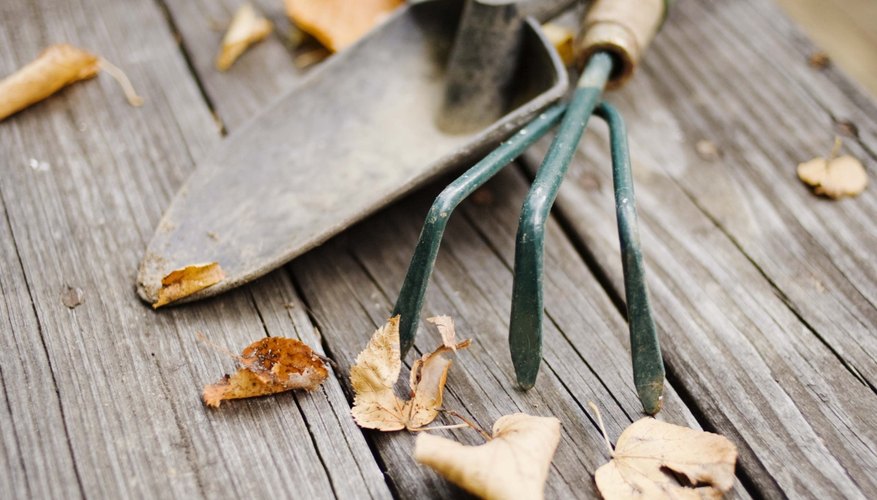Dock weed, a broadleaved perennial plant, is a member of the buckwheat family and a common weed in poorly maintained turf and grassland pastures. The plant's two main species are curly dock (Rumex crispus) and broadleaved dock (R. obtusifolius), both of which form a deep branched taproot that is difficult to remove entirely without disrupting the surrounding grass. Killing dock weed requires either manually removing each plant and much of its root, applying an herbicide or using organic weed control methods.
Dig out the dock weed and its taproot. Using a sharp garden spade or a dandelion fork, which is a long handled tool especially designed to reach deep taproots, remove the leafy part of the dock weed plant and its entire root. If the plant is growing in established turf and digging out the whole root would disturb the surrounding area, insert the pointed dandelion fork as close to the base of the plant as possible, loosening the root as you pull up on the plant. If you've removed at least 10 cm (4 inches) of the taproot, the plant has a difficult time rejuvenating from the remaining root.
- Dock weed, a broadleaved perennial plant, is a member of the buckwheat family and a common weed in poorly maintained turf and grassland pastures.
- Using a sharp garden spade or a dandelion fork, which is a long handled tool especially designed to reach deep taproots, remove the leafy part of the dock weed plant and its entire root.
Apply a broadleaved herbicide to control large infestations of dock weed -- any herbicide containing clopyralid. Glyphosate, known commonly by the brand name Round-Up, will also kill dock weed, but requires higher rates of the chemical and several applications.
Use an organic herbicide, such as an insecticidal soap, to kill dock weed and other broadleaved weeds. Soap-based herbicides dehydrate plant leaves and will kill young plants that have yet to establish an extensive root system. Other organic insecticides that kill broadleaved weeds contain clove oil (eugenol) or acetic acid and citric acid.
TIP
Spray herbicides and herbicidal soaps on non-windy days to ensure desirable plants are not affected. For the best results, spray weeds when the sun is shining brightly and the temperature is above 21.1 degrees C (70 degrees F).
WARNING
Avoid applying herbicides in July and August, when hot, dry weather poses an increased risk of causing damage to lawn grass.
